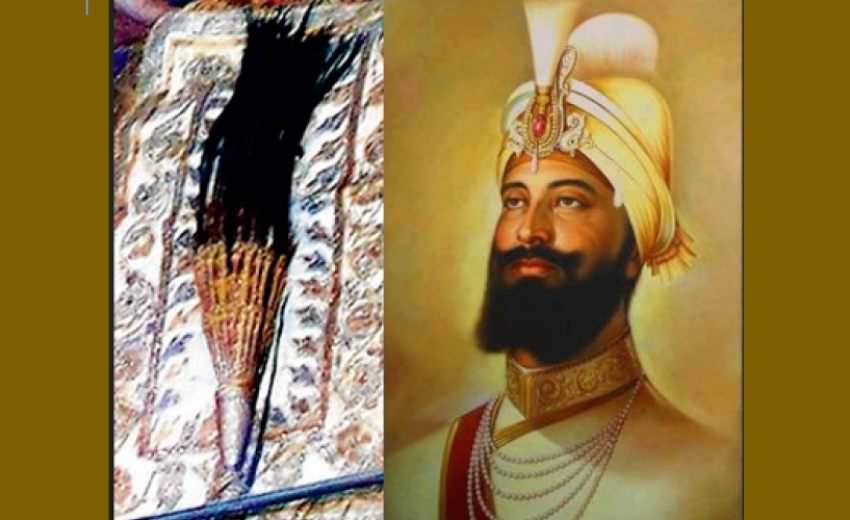A plume believed to have been worn by the tenth Sikh guru, Guru Gobind Singh, was brought from Britain to Punjab on June 30 after nearly a century. However, some Sikh clerics were waiting for proof of its authenticity.
The Shiromani Gurdwara Prabandhak Committee (SGPC), responsible for gurdwara maintenance and religious decisions, hesitated to confirm the plume's genuineness.
On the other hand, the Akal Takht, the highest Sikh institution, accepted the plume's authenticity. It was displayed in Amritsar on July 3 2009 within the Harmandir Sahib complex, but doubts about its authenticity emerged later. Now, the plume is securely stored in the Golden Temple's toshakhana (strongroom).
SGPC’s verdict
To address the concerns, SGPC chief Avtar Singh Makkar formed a fact-finding panel. Unfortunately, the panel couldn't reach a conclusion because there wasn't a detailed physical description of the plume available.
Dalmegh Singh, SGPC secretary and co-ordinator of the fact-finding committee, said, “We cannot come to any hasty conclusion. We are looking at all aspects, studying it from all historical perspectives.”
The panel had recommended the use of carbon dating to determine the age of the plume, but Sikh scholars had firmly rejected this idea. They contended that while the test could establish the plume's age, it could not conclusively link it to Guru Gobind Singh (1666-1708), who was affectionately known as "kalgidhar," meaning "one who wears the plume."
The Kalgi
The ornamental plume, referred to as "Kalgi" in the Punjabi language, is typically affixed to the front of a turban. It can be a single feather or a cluster of feathers, serving as an embellishment. Throughout the history of the Indian subcontinent, the esteemed rulers often adorned their turbans with a Kalgi or plume.The tenth, Guru Gobind Singh, is frequently portrayed wearing such a plume in his depictions.
Akal Takht supports the authenticity
On the contrary, Akal Takht jathedar (head) Giani Gurbachan Singh expressed his support for the authenticity of the plume. He was present at Amritsar airport when the plume arrived on a special flight from Delhi.
Punjab chief minister Parkash Singh Badal, who was considered to be closely associated with the SGPC, maintained a deliberate silence on the matter. However, was kept informed about the plume's journey by a two-member "research team" that had brought it from London.
Harpreet Singh Sidhu, an IPS officer pursuing an MPhil in criminology at Cambridge University, joined forces with Kamaljit Singh Boparai, a businessman, to acquire the cherished relic. They have chosen not to reveal the details of how they obtained this valuable item.
According to reports, the plume was reportedly transferred to them by a UK-based Sandhu family. Atam Singh Sandhu, a member of the Sandhu family, has recently clarified that he never asserted the plume's connection to Guru Gobind Singh. Atam Singh Sandhu is the son of Chanan Singh Chan, a well-known collector of Sikh heritage artefacts based in the UK. However, the origins of how the Sandhu family came into possession of the plume remain shrouded in mystery.
In the past, according to information provided by Sidhu, a Punjab-cadre officer, it was believed that the magnificent plume had been owned by the Sikh emperor Maharaja Ranjit Singh. He ruled from 1801 to 1839 and had his capital in Lahore.
Sidhu stated, “Court records of the Lahore durbar and the daily diary of Faqir Azzizuddin (a minister of Ranjit Singh) testify that the Maharaja daily paid obeisance to the plume.”
Lord Dalhousie, who served as the governor-general of India from 1848 to 1856, supposedly took the plume with him to hand it over to the directors of the East India Company. Evidence of his later purchase of the plume from the company's court of directors can be found in their correspondence. The ownership of the plume then transferred to Lord Dalhousie's son-in-law, Col W.H. Broun, as indicated by his correspondence with the Victoria and Albert Museum in London in 1898.
Unfortunately, there are no records explaining how the kalgi, or plume, came into the possession of Bamba Duleep Singh, the granddaughter of Ranjit Singh and daughter of Duleep Singh. It is reported that she briefly displayed the kalgi at Gurdwara Shaheedan in Lahore for a few days. After her death in 1957, European art collectors acquired the kalgi.
In 1999, the Victoria and Albert Museum officially confirmed in a communication to the British High Commission in India that the kalgi had indeed been in its possession, but it had been untraceable since 1976.
*Based on an article published in The Telegraph by Rasheed Kidwai on 17th August 2009

